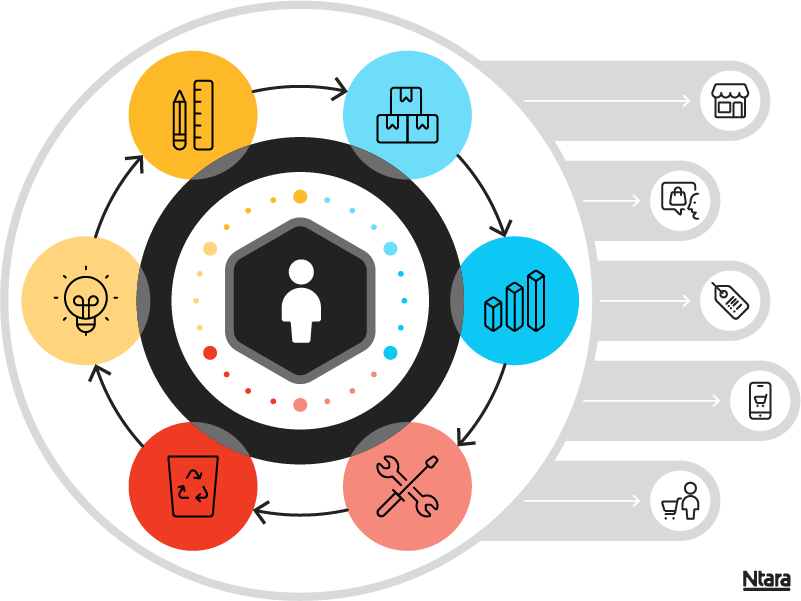PXM is a strategic layer of infrastructure that connects your PLM and ERP systems to the real world. It ensures that your product data doesn’t just exist. It performs across every stage of the product lifecycle.

PXM belongs in every CIO’s toolkit
The manufacturing CIO’s tech stack spans ERP, PLM, supply chain, ecommerce, and more. It is the CIO’s responsibility to modernize legacy systems, improve data integrity, and accelerate digital transformation, all while keeping costs in check and compliance airtight.
So, where does PXM fit? Right in the middle.
Why product lifecycle management needs a boost
PLM systems are great at managing the technical side of a product’s journey. They cover everything from ideation and design to engineering and manufacturing.
PXM bridges the gap between PLM and the customer-facing world. It puts PIM and DAM software at the middle of the product tech stack to transform rich, structured data from PLM (and ERP) into compelling, compliant, and channel-ready product content.
PXM across the product lifecycle
PXM plays a critical role at every stage of the product lifecycle. From conception to retirement, PXM helps companies ensure that product content is accurate, consistent, and ready for every channel and customer touchpoint. PXM acts as the connective tissue between your technical systems and customer-facing experiences. Here’s how it supports each phase, specifically.
1. New product introduction (NPI)
Without PXM, product data lives in silos. Marketing waits on IT. Product launches are delayed. With PXM, PIM and DAM systems pull structured data from PLM and ERP. That data gets enriched with marketing content and syndicated to all channels quickly.
2. Go-to-market strategy
PXM ensures that every product detail page, catalog, and distributor feed is accurate, complete, and compliant. No more scrambling to update specs or disclaimers across 12 platforms.
3. In-market optimization
With a PXM partner, you can monitor how your product content appears “in the wild” (ecommerce sites, dealer portals, print catalogs, etc.) and continuously optimize it for performance and consistency.
4. Product updates & end-of-life
Need to update a product spec, retire a product, or roll out a new version? PXM makes it easy to push changes across all channels from a single source of truth without relying on IT to manually update every endpoint.
The CIO’s perspective: Why it matters
PXM supports multiple CIO priorities, from data integrity and system modernization to operational efficiency and compliance. This works by:
- Creating a governed, centralized hub for product content
- Reducing reliance on IT for manual updates and custom feeds
- Integrating seamlessly with ERP, PLM, and ecommerce platforms
- Enabling faster, more accurate product launches
- Supporting compliance with audit trails and content governance
Want to see how PXM can streamline your product lifecycle? Contact us.